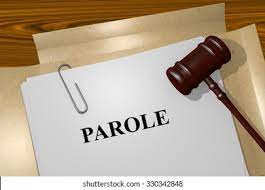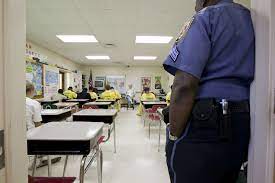Want help to write your Essay or Assignments? Click here
Case Study: Human Dignity And Capital Punishment
Introduction
Case study 2 describes human capital punishment for two Australian Citizens caught smuggling Heroin to Indonesia. Andrew Chan and Myuran Sukumar were executed after receiving death sentence from an Indonesian court.
Dignity refers to worth or value, therefore; human dignity refers to human worth and value. There are various approaches of human dignity which are classified by Kirchhoffer into two categories. Category 1 refers to the understanding of human dignity that is based in belief that human value is high because they are human or they possess certain capacities that are absent in other creatures. In Category 2, human dignity understanding is based on their belief that dignity is acquired or lost through the individual own feelings or specific dignity bestowing behaviour (Dhai, 2013). This paper describes the dignity of Andrew Chan and Myuran Sukumaran in relation to their execution based on Kirchhoffer classification.
Human dignity claims are mainly used to support or oppose death penalty. It has been argued that some acts such as homicide, death penalty are justified based on retributive punishment framework. Retribution involves respect for human autonomy and the decisions people make. It is also argued that death penalty is effective as it allows the relatives and friends of the victims find closure, facilitate emotional healing as they carry on with their lives (Jones, 2012). However, is there a possibility that some victims are unfairly executed? The main issue of significance in this case study 2 is that human life is sacred. It has inalienable dignity. In this regard, this paper explores the concepts of human dignity. It aims at evaluating if human dignity lie in human life, in the capacity of the decisions made by human or in the societal judgement of their past behaviour (Roche, 2011).
Perspective 1A: “Human has Dignity Simply because they are Human Species”
According to this perspective, human life is sacred. Most of the religious arguments fall into this perspective because they believe that human beings were created in the image of God. Non-religious proponents argue that is natural to fight for survival of one’s species, thus; it human species have special value against any intrinsic value or instrumental values possessed by the other species. This indicates that human beings have inherent worth because they belong to human species (Rydberg & Pizarro, 2014).
Based on this perspective, the execution of Andrew Chan and Myuran Sukumar in Indonesia devalued the aspects human dignity. This is because the value of human dignity is inherent is their lives and not their actions. According to religious arguments, people’s actions do not necessarily define their dignity. It is not what people do or fail to which gives them dignity. It is the purpose of God, creator of the heaven and earth. People’s action is shaped by circumstances they face (Zylberman, 2016).
Perspective IB “Human Beings have Inherent worth Due to their Distinctive and Special Abilities”
This perspective interrelates with perspective IA in that all human are equal and possess inherent dignity. This perspective argues that human dignity arises from the fact that they have special distinctive attributes and special abilities. This is supported by German philosopher Immanuel Kant that human beings value is intrinsic in all members of the society (Trojan & Salfati, 2010).
This implies that humans are to live a life as predefined by the societal morals and self-consciousness. This perspective is used to promulgate the aspect of moral values in the society, failure to which the person is punished according the punishment equivalent to the value violated. Similar to perspective IA, it argues that due to the high capacities and specific attributes possessed by human beings, then they can be rehabilitated through proper treatment and training. This perspective is supported by the case study as Andrew Chan and Myuran Sukumar has reformed completely; which indicates that their execution was unjustified (Muftic & Hunt, 2012).
2 A “dignity can be acquired or lost through sense of self-worth”
This perspective understands the concepts of human dignity as some type of pride in one self and conscious sense of an individual’s worth as human being, which enables them to live a meaningful life. The way a person view themselves impacts on their life experiences. People who lack self-worth tend to struggle to find happiness and success. This makes them engage in activities that deviate from the society norms, affecting their relationship with the other people. It leads to further misery and struggle. However, this does not reduce their human dignity because it is innate (Kirchengast, 2010).
This implies that it was important for the Indonesian society to challenge their thinking. For example, what criteria were it used to reach to an agreement that Andrew Chan and Myuran Sukumar were harmful people in the society? Did they have evidence on their past actions that indicated that they are extremely violent and threat to the society? The negative attitude accorded to these Australian citizens did not make sense because their verdict was made with an assumption that these individuals cannot transform, and that they will always be in their worst behaviours which is erroneous (McCormick, 2015).
2B “Dignity can be acquired or lost through Moral or Immoral Behaviour.
This perspective focuses much on the way the society judge’s one based on their past behaviour and not by their self-worth. Some people are the society’s hero because they lived selfless lives and lived their lives in pursuit of high ideals and exemplary conduct. These include people such as Mahatma Gandhi, Martin Luther King Jr., and Mother Teresa. Others may be judged as to have lost their dignity due to their violent criminal acts (Cssidy, 2012). In this case Andrew Chan and Myuran Sukumar were engaged in criminal activities of trafficking heroin. According to the Indonesian society, substance abuse is done by people who have an intent of becoming violent and harming others. The society has negative attitudes towards these two people as they perceive them as threat. For instance, the Indonesian government to surround Andrew Chan and Myuran Sukumar with military security style during transfer indicated that they perceived these people’s character as extremely dangerous which is not true (Kirchhoffer, 2011).
It can be argued that the death sentence is a form of punishment that removes bad/evil people in the society; which aims at increasing survival of good species; the outcomes of this practice are futile. An effective form of punishment should have a purpose to treat and restoration of the desired behaviour and not to kill. On the other hand, Andrew Chan and Myuran Sukumar determination to die with dignity so as to prevent their parent unnecessary distress indicates that they had gained sense of self-worth, and passionate enough to ensure that their relatives reach in closure and vindication (Mattson & Clark, 2011).
Want help to write your Essay or Assignments? Click here
Social Norms, Attitudes, and Other Circumstances Impact On the Aspects of Human Dignity
Proponents of death sentence argue that this practice protects the society from evil people, who inflict harm and distract the society harmony. According the social attitudes; it is the role of each and every government to protect its society from violent and heinous acts that would erode the society moral behaviour.
All people have the right to live in a safe environment, without the fear that their children will become drug addicts or die of addiction. Removing these people from the society is a measure to maintain public safety. Additionally, seeing people get executed, it deter other youths from practicing such acts (Ryan, 2016).
Additionally, the society ethics is embedded on the beliefs and ideas if what is wrong or right, good and bad. Human dignity is embedded in the social relationships satisfaction and attitudes held by the society. In addition, it is embedded on the patterns of behaviour that are believed by the society as they bring in harmony and cooperation, fairness and justice. The beliefs and ideas of human dignity are analysed, articulated and interpreted according to the moral thinkers of the society.
Most of the westernized society are characterised by organized functioning human communities. The ethical systems have undoubtedly evolved their values, values and principles that regulate human behaviour (Kirchhoffer & Dierickx, 2011). Based on the Indonesian society values and believes, then Andrew Chan and Myuran Sukumar punishment was justified.
The main argument for the ruling by the Indonesian court is that it aimed at deterring such actions from happening again. In my perspective, death penalty does not seem to deter people from committing violent crimes. It only deters the likelihood of other criminals being caught and punished. There lacks a scientific proof that the death penalty resulted to greater deterrent effect than other forms of punishment (Kirchhoffer & Dierickx, 2012).
Therefore, the execution of these two prisoners was harsh punishment on the individuals but not on crime. The impact underlying societal expectation and values cannot be overlooked. This has resulted in education frameworks that ignore the fundamental values of human dignity but focuses more on wealth acquisition. For this reason, the society has failed to value life and to cherish human beings above their possessions, power, desires and pleasures (Wierenga, 2011).
Human Dignity is Multidimensional
Humans possess multidimensional qualities including the emotional, physical, social, spiritual, symbolic and interpersonal qualities. According to Macquarrie, humanity is unfinished product that is moving into possibilities that are still unfolded. Therefore, during these developments and concepts, human dignity concepts tend to conflict each other. Human dignity is multidimensional. It can be described in four different ways, which sometimes they conflict to one another. Human dignity is something that human already have and also something that they strive to acquire (Lee, 2014).
Based on International Covenant on Civil and Political Rights (ICCPR), all people that have limited liberty must be treated with liberty and respect (1 A). This affirms the argument in that dignity lie in human. This ideology acknowledges the complexity of being human and the multidimensional aspects involved. Therefore, human beings are not to be reduced to one type of level of functioning (Vanhaelemeesch & Vander Beken, 2014).
Where a deviation occurs, it is important to understand that all humans are equal. It is important to also acknowledge that dignity as an aspect that can be acquired or lost through sense of self-worth (2A). Therefore, it is likely that Andrew Chan and Myuran Sukumar past actions were due to loss of self-worth, but through rehabilitative processes, their self-worth would have been restored. However, their loss of sense of dignity cannot be equated to their actual possession of dignity (Strelan & Prooijen, 2013).
The quadrant 1B argues that Human beings have inherent worth due to their distinctive and special abilities.Perspective 2B states that dignity can be acquired or lost through moral or immoral behaviour which according to my perspective, they do not support death penalty as human beings have unique capacity of being rehabilitated and become reformed. Therefore, it is rather obvious to state that if human life is complex than on single dimension, then it is unfair to just the person’s dignity based on one dimension. Although it is important to acknowledge that a person’s moral action indicates their dignity orientation, it is also important to recognize that there is chance for change, growth, compassion, forgiveness and reconciliation (Matthews, 2014).
Conclusion
The criminal justice system should maintain law and order in the society by punishing the offenders. However, harsh and unjustified punishments will not restore the victim’s behaviours. In my perspective, capital punishment must be eradicated and replaced with rehabilitative services that challenge, encourage and reward the offenders for their transformed attitudes and behaviours.
Most of the offenders engage in criminal activities to seek means of survival. Empowering them with skills will help them get employment, and live by example in the society. In this case, the execution of Andrew Chan and Myuran Sukumar was unjustified as their human dignity was not protected. I believe these past experiences have facilitated change in such policies that devalue the dignity of human.
References
Cassidy, J. (2012). Hollow Avowals of Human Rights Protection – Time for an Australian Federal Bill Of Rights? Deakin Law Review, 13(2), 131-176.
Dhai, A. (2013). Human Dignity in Contemporary Ethics by David G Kirchhoffer. S Afr J BL, 6(2), 74. http://dx.doi.org/10.7196/sajbl.294341..com/login.aspx?direct=true&db=aph&AN=5913723&site=ehost-live,
JONES, D. (2012). HUMAN DIGNITY IN BIOETHICS AND LAW by Charles Foster. New Blackfriars, 94(1049), 114-116. http://dx.doi.org/10.1111/j.1741-2005.2012.01524_2.x
Kirchengast, T. (2010). The Landscape of Victim Rights in Australian Homicide Cases–Lessons from the International Experience. Oxford Journal Of Legal Studies, 31(1), 133-163. http://dx.doi.org/10.1093/ojls/gqq031
Kirchhoffer, D. (2011). Bioethics and the Demise of the Concept of Human Dignity. Human Reproduction & Genetic Ethics, 17(2), 141-154. http://dx.doi.org/10.1558/hrge.v17i2.141
Kirchhoffer, D. & Dierickx, K. (2011). Human dignity and human tissue: a meaningful ethical relationship?. Journal Of Medical Ethics, 37(9), 552-556. http://dx.doi.org/10.1136/jme.2010.041509
Kirchhoffer, D. & Dierickx, K. (2012). Human dignity and consent in research biobanking. S Afr J BL, 5(2). http://dx.doi.org/10.7196/sajbl.237
Lee, C. (2014). Inter-war Penal Policy and Crime in England: The Dartmoor Convict Prison Riot, 1932. Social History, 39(2), 303-304. http://dx.doi.org/10.1080/03071022.2014.896548
MATTHEWS, P. (2014). HUMAN DIGNITY IN CONTEMPORARY ETHICS by David G. Kirchhoffer, Teneo Press, New York, 2013, pp. xii + 356, £16.00, pbk. New Blackfriars, 96(1061), 122-124. http://dx.doi.org/10.1111/nbfr.12103_9
Mattson, D. & Clark, S. (2011). Human dignity in concept and practice. Policy Sci, 44(4), 303-319. http://dx.doi.org/10.1007/s11077-010-9124-0
McCormick, P. (2015). Book Review: Human Dignity in Contemporary Ethics. By David G. Kirchhoffer. Theological Studies, 76(4), 895-896. http://dx.doi.org/10.1177/0040563915605267r
Muftic, L. & Hunt, D. (2012). Victim Precipitation: Further Understanding the Linkage Between Victimization and Offending in Homicide. Homicide Studies, 17(3), 239-254. http://dx.doi.org/10.1177/1088767912461785
Roche, D. (2011). The Evolving Definition of Restorative Justice. Contemporary Justice Review, 4(3/4),
Ryan, P. (2016). CAPITAL PUNISHMENT. Quadrant Magazine, 50(1/2), 127-128. Stapleton, P., & Whitehead, M. (2014). Dysfunctional Eating in an Australian Community Sample: The Role of Emotion Regulation, Impulsivity, and Reward and Punishment Sensitivity. Australian Psychologist, 49(6), 358-368. doi:10.1111/ap.12070.
Rydberg, J. & Pizarro, J. (2014). Victim Lifestyle as a Correlate of Homicide Clearance. Homicide Studies, 18(4), 342-362. http://dx.doi.org/10.1177/1088767914521813
Strelan, P., & Prooijen, J. (2013). Retribution and forgiveness: The healing effects of punishing for just deserts. European Journal of Social Psychology, 43(6), 544-553. doi:10.1002/ejsp.1964. Weatherburn, D. (2014). Strategies for managing criminal justice systems. Australian Journal of Public Administration, 53(1), 67.
Trojan, C. & Salfati, C. (2010). A Multidimensional Analysis of Criminal Specialization Among Single-Victim and Serial Homicide Offenders. Homicide Studies, 14(2), 107-131. http://dx.doi.org/10.1177/1088767910364936
Vanhaelemeesch, D. & Vander Beken, T. (2014). Between convict and ward: the experiences of people living with offenders subject to electronic monitoring. Crime Law Soc Change, 62(4), 389-415. http://dx.doi.org/10.1007/s10611-014-9535-5
Wierenga, A. (2011). Transitions, local culture and human dignity: Rural young men in a changing world. Journal of Sociology, 47(4), 371-387. doi:10.1177/144078311420791.
Zylberman, A. (2016). Human Dignity. Philosophy Compass, 11(4), 201-210. http://dx.doi.org/10.1111/phc3.12317
Want help to write your Essay or Assignments? Click here









